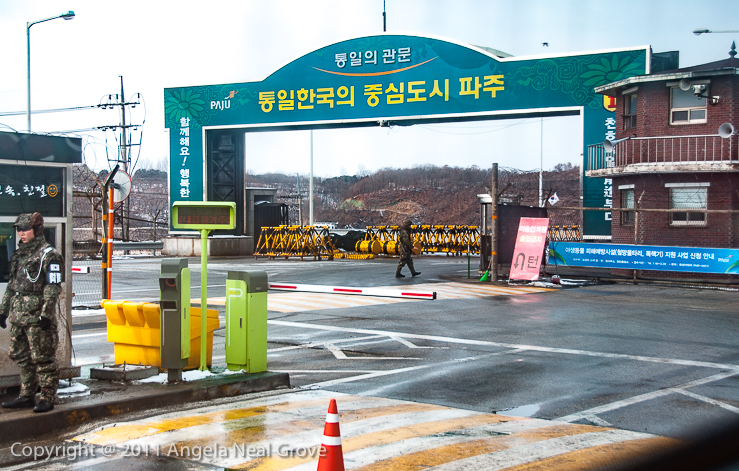
Two weeks ago the eyes of the world were once again focused on Korea’s DMZ. A young North Korean soldier made a daring dash for freedom across the 2.5 mile divide. He survived – barely.
A Nation Divided
The DMZ, Korea’s Demilitarized Zone maybe the world’s most hostile border, created during tense armistice negotiations in 1953. A mere 37 miles from Seoul with its cutting edge technology, Gangnam nightlife and chic boutiques, the contrast between North and South could not be more stark.
On a recent trip United Airlines routed me home from Myanmar through Seoul. I decided to stop, see the city and visit the DMZ. It left a chilling indelible impression.
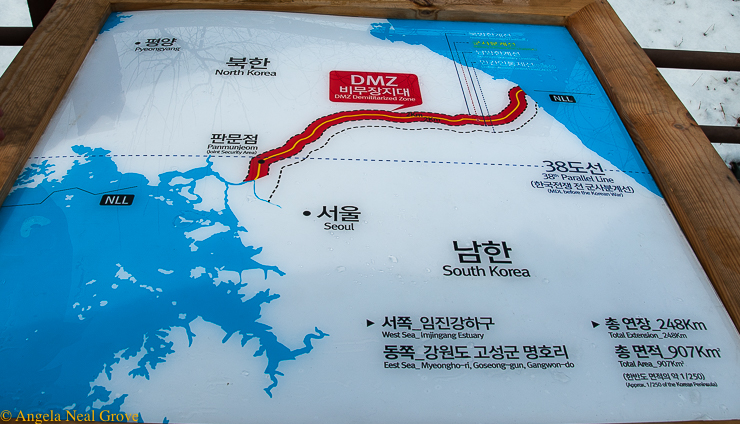
Everything about visiting this line of demarkation, which snakes from sea to sea across the Korean peninsula, is tightly regulated. Even clothing and behavior have a strict protocols, and you cannot just rent a car and drive up there. You have join a tour group or have an approved guide.
There was also a form to fill out, stating the visit will “entail entrance into a hostile area with the possibility of injury or death as the result of enemy action.”
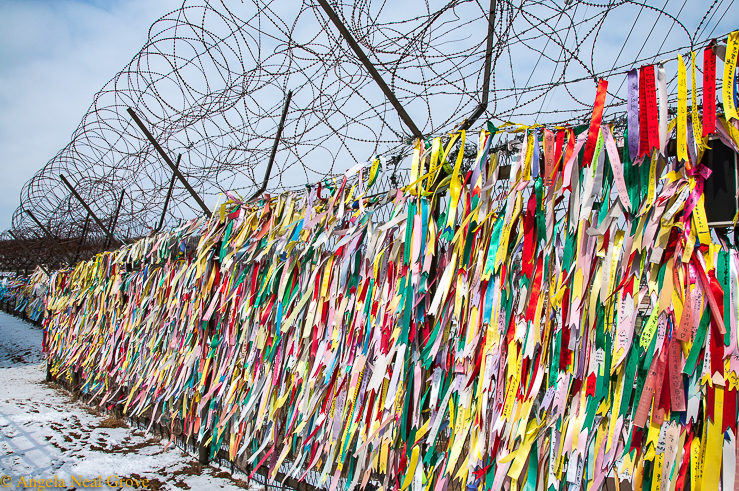
Food Parcels, Blessings and Hope at Korea’s DMZ
I met my approved guide outside the Lotte Hotel in the early morning February chill. His breath made dragon puffs in the cold air.
The road north follows the Han River. The monochromatic scene of frosty white rice fields, icy ponds and pale winter sky was marred by watchtowers and tumbles of coiled razor wire. There was almost no traffic.
Arriving at the Joint Security Area at Panmunjom we went first to the Peace Temple. On the steps a buddhist monk was blessing boxes of fresh fruit and wrapped parcels.
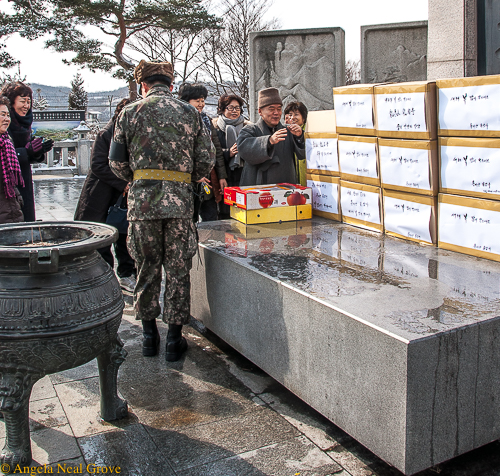
Relatives of North Korean families frequently prepare parcels of food and warm clothes, which are taken across the border by UN peace-keepers. These are family members they have not seen in decades. No one knows if they reach their intended destination.
After the blessing we watched as the boxes were carefully loaded into Jeeps. It was a poignant scene.
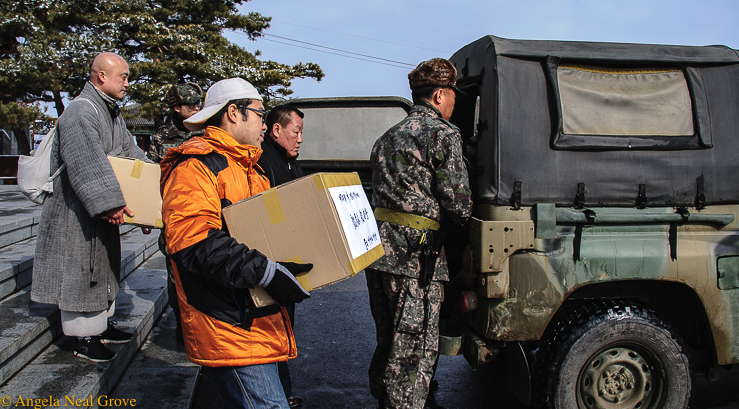
Across the Border – Cold and Forbidding
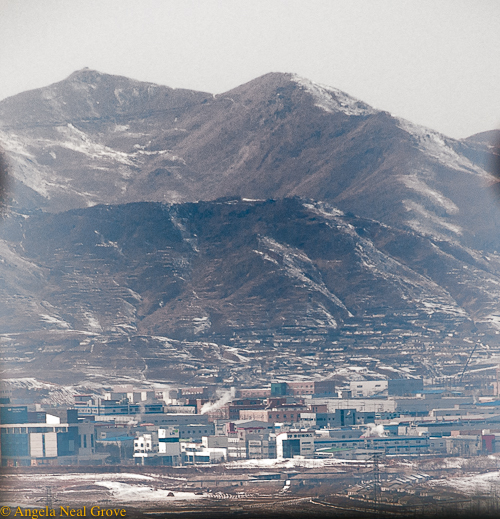
Next I went to a camouflaged utility building named the Dora Observatory. This is the designated place to catch a glimpse of North Korea.
It is very tightly regulated. There is a row of large lens binoculars where visitors can see a model village, Kijong-dong on the opposite side of the divide. The square clusters of buildings are known as the propaganda village.
I was not allowed to photograph the scene from the edge of the platform (too dangerous?) but had to stand 12 feet back where my view was somewhat obscured by the binoculars. Fortunately some details emerged during processing.
Hopes for Re-Unification
After this I went to see the state of the art railroad station, all gleaming glass and shiny fixtures. There are maps of the rail-link through North Korea connecting with The Trans Eurasian Railway Network which even reaches across the English Channel to London. Dreams for the future. For now there is no one in the station and no trains. No tickets are issued for the ride to Pyongyang.
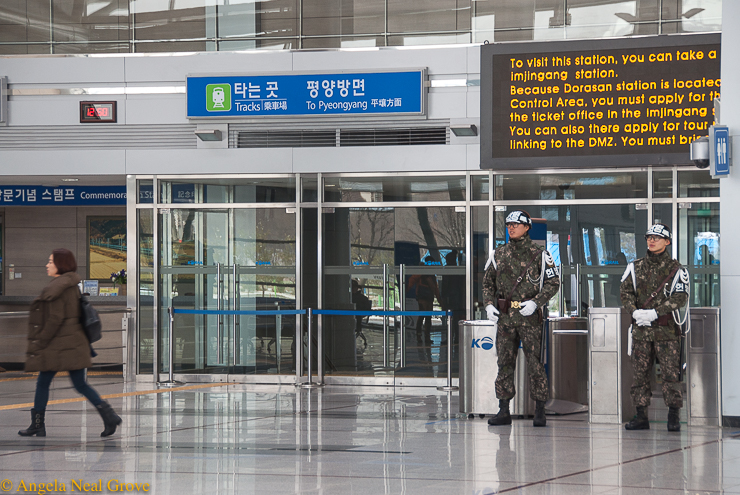
Infiltration Tunnels
For the conclusion of Korea’s DMZ tour I was issued a hard hat. In 1978 a defector warned of a tunnel being excavated under the border reaching into South Korea.
I went 240 feet into the tunnel. Holes with explosive charges are clearly visible. This was the third of three tunnels discovered by the South Koreans. To me it was chilling and disturbing. I was ready to return to Seoul.
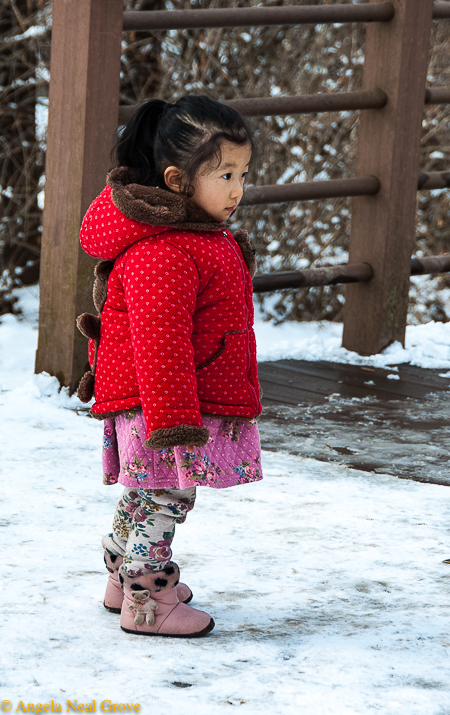
Surprising Ecological Postscript
Once known as the Land of Embroidered Rivers and Mountains, the continuous conflicts of the last 100 years on the peninsula has caused massive devastation, deforestation and pollution. Conversely the 400 square miles of no mans land DMZ has become a refuge for endangered bird, animal and plant life.
Asiatic black bear, musk deer, red-crowned and white-naped cranes all thrive. There are even reports of tigers roaming the DMZ mountains.
From my vantage point near the freedom bridge I was not able to see the mountainous remote areas of the border, home to wildlife. There are plans that when and if and when reunification occurs the DMZ will become a permanently protected conservation area with ecotourism. Zones might attain World Heritage Site Status through UNESCO. As with reunification this idea currently seems a big reach.
So for now plant and animal life thrive amid conflict. A tiny sliver of silver lining at the worlds most hostile and volatile border, Korea’s DMZ